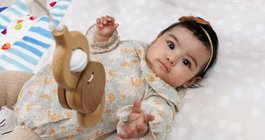
March 06, 2016
Children on the autism spectrum are more than seven times more likely to show signs of gender variance, according to a study led by New York University.
The study, published last month in Transgender Health, recruited the parents of 492 autistic children ages six to 18. When the researchers asked these parents whether their children often "wish to be the opposite sex," a little over five percent of participants said yes, compared to less than one percent of the general population.
Bolstering these findings is the fact that a previous study from the Children's National Medical Center in 2014 found almost the exact same results. The NYU study found that 5.1 percent of children on the autism spectrum showed signs of gender variance. The 2014 study put that number down at 5.4 percent.
Both studies also found that the child's assigned sex at birth doesn't affect their chances of being gender variant. However, that's after taking into account the fact that autism is around four times more common in natal males than females to begin with.
It's not clear why people on the autism spectrum are also more likely to question their gender identity. John Strang, the author of the 2014 study, told PrideSource that perhaps the children in his study were more likely to express gender non-conformity because they "were less worried about what people thought" and "weren't really noticing the social expectations or the social biases" against transgender people.
Both studies show that counselors working with autistic children should ask about their gender identity. Being both autistic and gender non-conforming, some children face a double-challenge in responding to society's biases.
"Facilitating our patients' experience and understanding of their gender identity and expression may be an important focus in treating clients," wrote study authors Aron Janssen, Howard Huang, and Cristina Duncan.
Read the full study here.